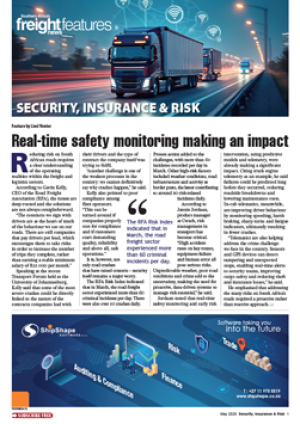A perspective from our US correspondent, Martin Rushmere, who was FTW's correspondent in Zimbabwe for almost 10 years, until 2002. He now lives in San Francisco where he is the California correspondent for Fairplay magazine, part of the Lloyd’s Register group. POLITICAL HYSTERIA in the United States over supposed foreign control of the country’s ports has ignored warnings about declining efficiency. During the last six months, at public forums and conferences, analysts and shipping executives have roundly criticised the ban on the Dubai acquisition of P&O ports, while calling for urgent attention to improving operations. At the heart of the problem is slow container handling and moving rates coupled with severe mismanagement of stacking space, linked to what is often called “the elephant in the room that no one is looking at” - the unchecked power of the overpaid dockworkers’ unions. Foreign companies already own three-quarters of all terminals in the country, a fact conveniently forgotten by politicians, but they are helpless against the unions. Owners - local and foreign - have no say in the appointment of workers who operate the cranes, forklifts and associated equipment. This is dictated by two trade unions, (known as longshoreman), which set huge minimum wages and promote scandalous inefficiency. Becoming a fully fledged dockworker member of the trade unions brings comfort for the rest of your life. At Los Angeles and next door Long Beach, which handle 14 million containers a year (40% of the national total), average wages are $90 000 a year (R630 000) along with free medical and dental cover. Working hard is not part of the culture, as shown by a comparison with international ports in Europe and Asia. The number of containers handled at the two ports is 350 000 per berth a year - between 40% and 50% of their competitors. Average container lifts per hour are 25, compared with 40 to 50 everywhere else. Movements within the yards average 3 000 per gross acre, one-fifth of the Asian and European average. Translated, it means America does not stack its containers as high and makes the service roads wider. Why? Because it takes more forklifts, more gantries and, above all, more people to move them, which means more jobs for the dockworkers. Port authorities and shipping lines are scared to confront the unions, to avoid a repeat of 2002 when attempts to get faster throughput at ports at a time of a big increase in imports led to a strike and a nationwide consumer goods shortage. Most American consumers get angry with Congress only when shelves at Wal-Mart are empty. With the current mood of protectionism, dressed up as increased security against potential terrorism, the unions know there is no pressure on them to improve. Along with this is political pressure to force other foreign terminal owners to American operators on the pretext that they could pose a security threat. In reality this is a disguised tactic to capitalise on public concern about the rise of China’s commercial power. The government has been quite happy for the past 10 years with the 85% foreign ownership of terminals, led by AP Moller and Maersk with more than 50%. Congress hints that action will be taken only against China’s operations, which account for only 15% of total foreign interests. In the frenzy to get votes, Congress is sticking to its habit of ignoring bad news. Politicians are deaf to warnings from the transport industry that not only will there be another port congestion crisis soon but that inefficiency is leading to higher costs of goods. By the time the Wal-Mart shelves are again bare, the politicians will be safely re-elected or retired.
